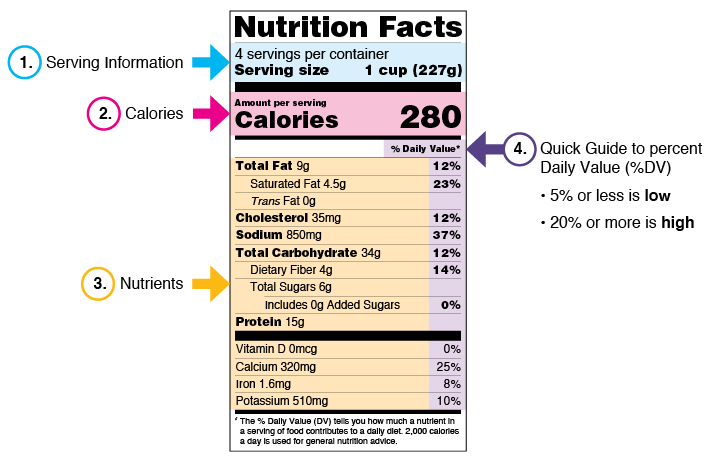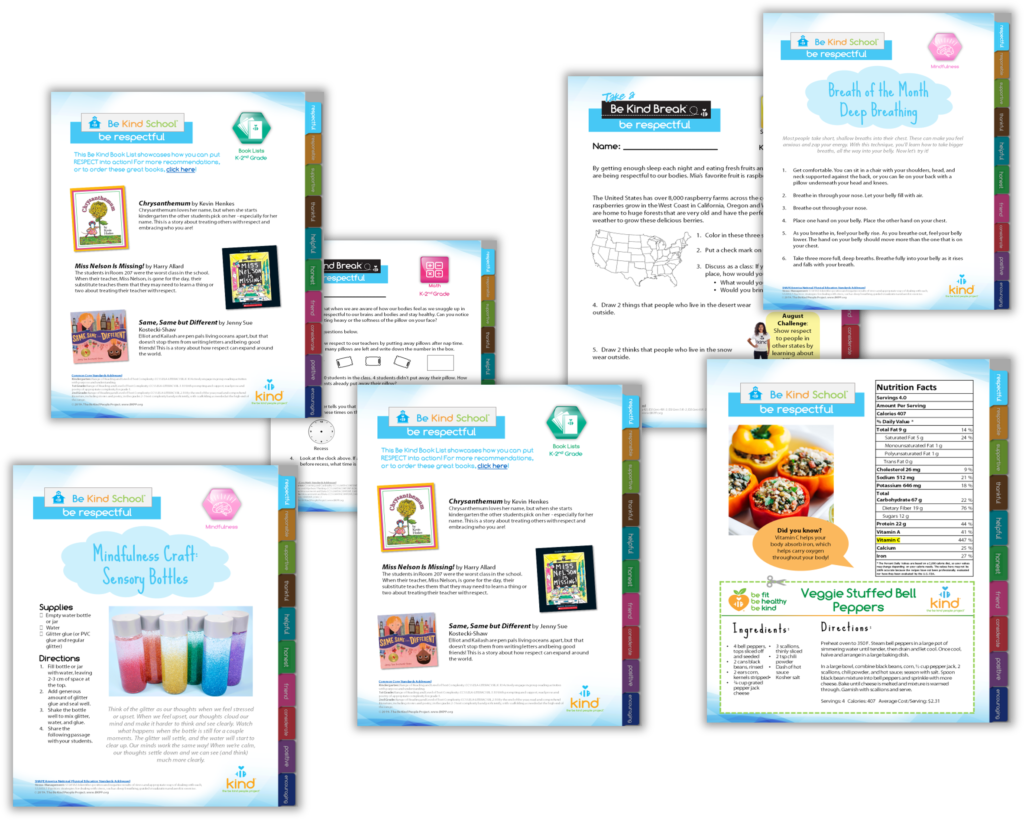- About
- Programs
- After School Classes
- All-School Assemblies
- The BE KIND Business
- The BE KIND Community Education Center
- The BE KIND SCHOOL
- BE KIND on the MOVE
- Classroom Resources
- #CyberSkills
- Family Engagement
- Fitness Programs
- Gardens
- Grace’s Group
- Health & Wellness
- Summer Programs
- Teacher Training
- Wellness Wednesday
- Athletes for Arizona
- Events
- Get Involved
- Donate
Nutrition Label 101
- Home
- Wellness Wednesday
- Nutrition
- Nutrition Label 101
Unwrapping Nutritional Know-How
Holiday Edition of Intuitive Eating

Welcome to the holiday edition of Wellness Wednesday, where we’re all about guiding you through the art of reading nutrition labels and embracing intuitive eating during this festive season. The holidays bring joy, warmth, and delicious feasts, but they can also pose a challenge when it comes to making mindful food choices. In this special edition, we’re excited to unravel tips and insights on how to navigate the holiday table with a blend of nutrition-label savvy and intuitive eating. Join us on this journey towards savoring the holiday season while maintaining a healthy, balanced approach to food. Get ready to unwrap the secrets to guilt-free indulgence and harmonious, healthful celebrations!
What is a Nutrition Label?
Reading a nutrition label is an essential skill in making informed dietary choices. Applying the information from the label to your diet involves being mindful of your overall intake, making balanced choices, and aiming to consume a variety of nutrient-dense foods. From the FDA, (Food and Drug Administration) we want to prioritize whole foods and try to limit heavily processed items high in added sugars, unhealthy fats, and sodium.
- Serving Size: Begin by checking the serving size listed on the label. All other values provided are based on this portion. Make sure to measure your portions accordingly to match the serving size.
- Calories: Note the number of calories per serving. This helps in managing your overall calorie intake throughout the day.
- Macronutrients: Look at the amounts of macronutrients – fats, carbohydrates, and proteins. Be mindful of the type and quantity of fats (saturated, trans fats), sugars, and proteins present in each serving. MyFitnessPal is a great tool to determine your calorie needs and macronutrient goals.
- Vitamins and Minerals: Check the percentages of essential vitamins and minerals. Aiming for higher percentages of nutrients such as calcium, iron, vitamin D, and potassium is beneficial.
- Ingredients List: Review the ingredients, which are listed in descending order by weight. Choose products with fewer, familiar, and healthier ingredients. Be wary of added sugars, artificial colors, or preservatives.
- % Daily Value (%DV): The %DV indicates how much of a nutrient is provided in one serving compared to the daily recommended intake. Aim for lower %DV in categories like saturated fats, cholesterol, and sodium, and higher %DV in fiber, vitamins, and minerals.
- Comparative Analysis: Compare similar products to make healthier choices. Look for options with lower amounts of unhealthy fats, and added sugars, and higher amounts of fiber, vitamins, and minerals.
Merry Substitutions
Substituting ingredients in holiday recipes can be a creative secret to cater to various dietary preferences or health needs without sacrificing flavor. People Magazine encourages experimenting with a few of these substitutions allowing for the creation of delicious, health-conscious dishes that everyone can enjoy during the festive season.
- Butter or Oil: Substitute applesauce, mashed bananas, Greek yogurt, or avocado for butter or oil in baking to reduce fat content while maintaining moisture.
- Sugar: Opt for natural sweeteners like honey, maple syrup, agave nectar, or dates to reduce refined sugar content in baked goods or desserts.
- White Flour: Replace white flour with whole-grain flour, almond flour, oat flour, or coconut flour for a more nutrient-dense option.
- Cream or Full-Fat Milk: Use low-fat or plant-based alternatives such as coconut milk, almond milk, or cashew cream in recipes that call for heavy cream or whole milk.
- Eggs: Use chia seeds, flaxseeds, applesauce, or commercially available egg substitutes for binding in baking or cooking to make recipes vegan or reduce cholesterol.
- Dairy Products: Try dairy-free alternatives like almond milk, coconut milk, or soy-based cheeses to accommodate lactose intolerance or a vegan diet.
- Breadcrumbs: Use crushed nuts, seeds, or rolled oats as a gluten-free alternative for recipes requiring breadcrumbs.
- Sour Cream: Substitute Greek yogurt or cashew cream for sour cream in dips, sauces, or desserts.
- Alcohol: Replace alcohol in recipes with fruit juices, flavored extracts, or non-alcoholic alternatives to make dishes suitable for non-drinkers or those avoiding alcohol.
- Salt: Enhance flavors using fresh herbs, spices, or citrus zest to reduce salt in savory dishes without compromising taste.
Holiday Eats
The essence of intuitive eating during the holidays involves honoring your hunger, enjoying the flavors, and listening to your body’s cues. The Pioneer Woman shares these healthy recipes and more, which you can adjust to suit your preferences, and focus on creating meals that feel nourishing, delicious, and satisfying without the need for rigid rules.
- Roasted Vegetable Medley: Prepare a colorful assortment of roasted vegetables like Brussels sprouts, sweet potatoes, carrots, and bell peppers. Use herbs and spices to enhance the natural flavors without heavy sauces or excessive oils.
- Festive Fruit Salad: Create a fruit salad with seasonal fruits like pomegranate, cranberries, oranges, and apples. Add a touch of cinnamon or a splash of citrus juice for a refreshing zing.
- Homemade Soup: Prepare a nourishing soup with seasonal ingredients such as butternut squash, lentils, or a hearty vegetable-based soup. Experiment with spices and herbs to elevate the taste without relying on heavy cream.
- Herb-Roasted Turkey or Tofu: Roast turkey or tofu with a blend of herbs and a light drizzle of olive oil, allowing the natural flavors to shine. Avoid excessive salt and processed seasonings.
- Whole Grain Stuffing: Create wholesome stuffing using whole-grain bread, nuts, dried fruits, and a variety of herbs. This provides a nutrient-rich alternative to traditional stuffing recipes.
- Lightened-Up Desserts: Modify traditional desserts by reducing sugar, using healthier sweeteners like dates or honey, and incorporating fruit-based fillings or whole-grain flours for a more nutritious twist.
- Healthier Beverages: Offer a range of flavored waters, herbal teas, or homemade fruit-infused beverages as refreshing alternatives to sugary drinks.
- More go to Healthy Holiday Recipes: Roasted Root, The Gracious Pantry, and EatWell
We hope you have a wonderful holiday season and enjoy culinary exploration, making your festive meals not only delicious but also welcoming to all who gather around your table!
Published on December 20, 2023
Questions? Comments? Want to contribute to the Wellness Wednesday Blog?
Send your ideas to info@bkpp.org.

Learn More about The Be Kind People Project®
- Programs
- After School Classes
- All-School Assemblies
- The BE KIND Academy
- The BE KIND Business
- The Be Kind Break
- The BE KIND School
- The BE KIND on the MOVE
- #CyberSkills
- Family Engagement
- Fitness Programs
- Gardens
- Grace’s Group
- Health & Wellness
- Summer Programs
- Teacher Training
- Wellness Wednesday
- Athletes for Arizona
Copyright © The Be Kind People Project | Privacy Policy



